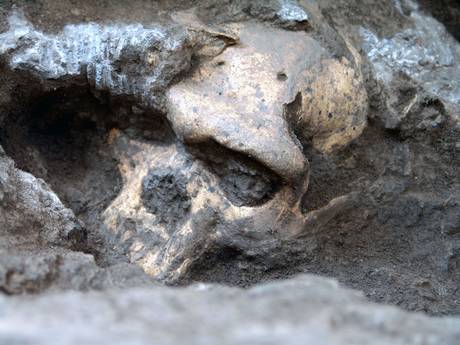The theory that there were three separate hominid species roaming Africa has been destabilised recently as a team from the University of Zurich has unearthed an early human skull that shows huge variation from other skulls found in the same area. This claim stems from the contrasting anatomical data found in the early human remains uncovered in Georgia.
Dmanisi, Georgia is a great anthropological site for the study of the early evolution of human populations. A total of five intact human skulls have been excavated with the latest discovery, skull 5 ÔÇô a 1.8 million year old skull, being the most discussed.
If the skulls from this site were found at opposite ends of the continent, most scientists would have classified them into separate species. However, the fact that they were found in the same area and the same geological time zone suggests that they represent the natural variation in an early hominid population. Skull 5 unites all the factors of an early hominid skull that would have previously been used to define different African species. When the Dmanisi skulls were compared to skulls of a different species from Africa, the question was raised of whether they were different at all.
Christoph Zollikofer of the Anthropological Institute, University of Z├╝rich, states that the findings from the statistical analysis show that the five Dmanisi hominids have obviously different traits from the others in the population; they are no more different than five modern humans would be to one another. Further studies will need to be carried out to determine whether fossils currently categorised into Homo habilis and Homo rudolfensis are actually part of a single evolving Homo erectus lineage.
The discovery and investigation into this skull will not change the general consensus that says hominids began in Africa and then spread into Eurasia, but the number of taxa that are being used to classify the early human remains may be too numerous. This makes Homo erectus the first link in a long chain of human evolution.
Roxanne Everitt





Add Comment